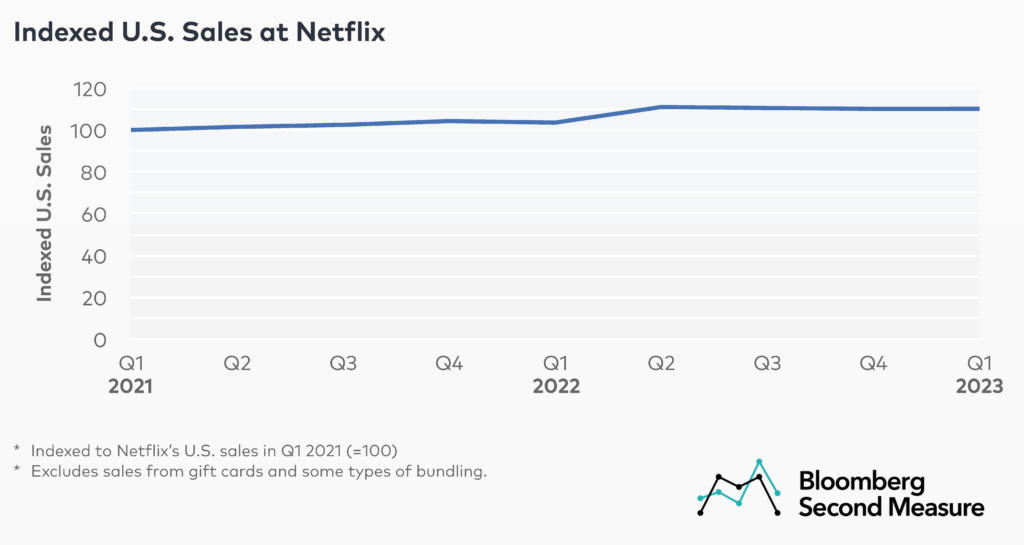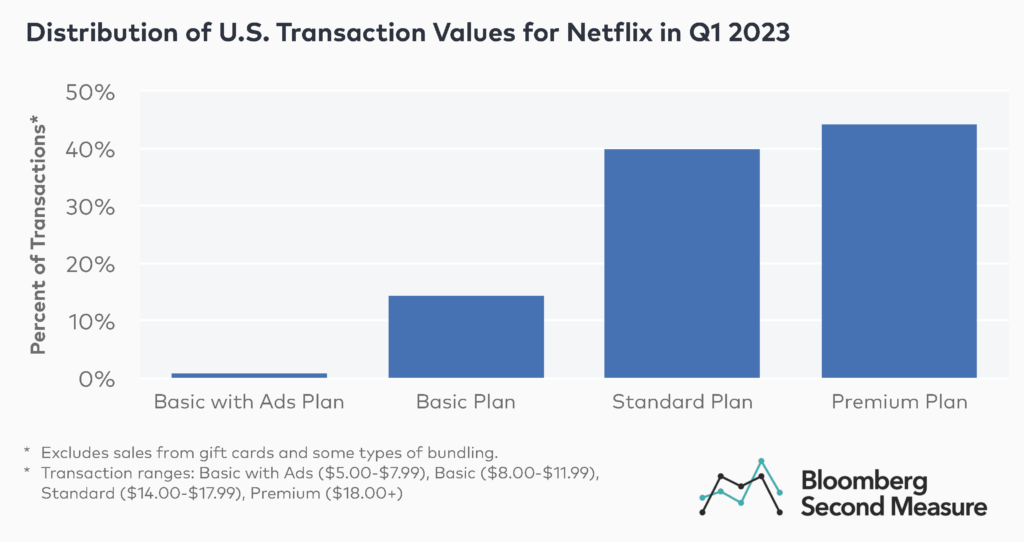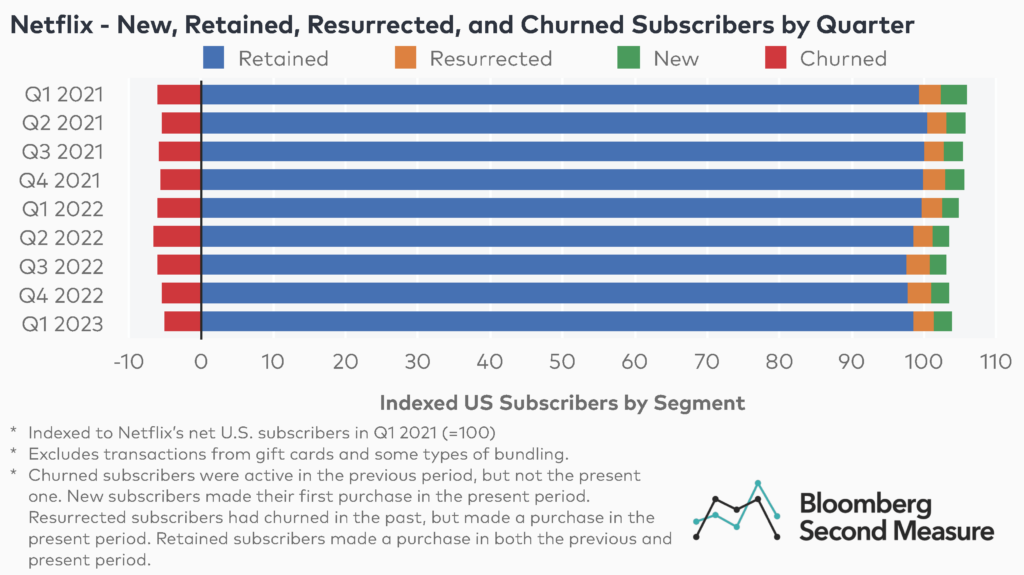On April 18, 2023, Netflix (NASDAQ: NFLX) announced its FY23 Q1 revenue results. Despite initiatives aimed at boosting its sales and subscription numbers, such as the recently introduced ad-supported subscription tier, Netflix reported an earnings miss. Transaction data shows that while the company’s Q1 2023 U.S. sales grew compared to Q1 2022 and Q1 2021, the ad-supported tier is still catching on among subscribers. Our data also reveals that when it comes to Netflix’s U.S. subscriber growth, the streaming service did not attract as many new customers in Q1 2023 as in the comparable quarters of 2022 and 2021. At the same time, fewer Netflix subscribers churned in Q1 2023 compared to 2022 and 2021.
Netflix’s (NASDAQ: NFLX) U.S. sales grew in Q1 2023 compared to Q1 2022 and Q1 2021
Bloomberg Second Measure’s transaction data shows that Netflix’s U.S. sales in Q1 2023 grew 6 percent compared to the same period in 2022. Compared to Q1 2021, the streaming service’s sales in the first quarter of 2023 were up 10 percent.

While Netflix’s sales remained relatively unchanged throughout 2021, they spiked in Q2 2022. Between the first and second quarters, the company’s sales jumped 7 percent and remained elevated throughout the remainder of 2022 and the first quarter of 2023. The sales spike in Q2 2022 was likely due to the monthly subscription price increase announced by Netflix in January 2022.
Most of Netflix’s U.S. subscribers had either the Standard or Premium subscription plan in Q1 2023
Zooming in on Netflix’s various subscription plans, Q1 2023 was the first full quarter under the streaming platform’s new four-tiered subscription model. Transaction data shows that the Premium plan was the most popular among Netflix’s U.S. subscribers in that period. In Q1 2023, 44 percent of Netflix’s U.S. consumer transactions were above $18.00, which corresponds with the price of Netflix’s premium offering. The Standard plan (represented by transactions between $14.00 and $17.99) was the second most popular option and accounted for 40 percent of Netflix’s U.S. transactions in Q1 2023.

Looking at the lower price points, 14 percent of Netflix’s U.S. transactions in the first quarter of 2023 were between $8.00 and $11.99, corresponding with the price of Netflix’s Basic plan. Meanwhile, transactions between $5.00 and $7.99, representing the Basic with Ads plan, accounted for just 1 percent of Netflix’s U.S. transactions in Q1 2023. Notably, our data excludes transactions through gift cards and some types of bundling including cable and media bundles.
Netflix attracted fewer new customers in Q1 2023, compared to previous years, but also saw fewer subscribers cancel their memberships
Diving into Netflix’s U.S. subscriber growth in Q1 2023, Netflix’s resurrected subscriber count (defined as subscribers who had churned at some point in the past, but made a purchase in the present period) was up 7 percent compared to the same period of 2022. Meanwhile, the retained subscriber count remained relatively unchanged, the new subscriber count was down 2 percent, and the churned subscriber count decreased 15 percent, compared to Q1 2022.

Compared to Q1 2021, Netflix’s retained subscriber count remained relatively steady in Q1 2023. Meanwhile, its resurrected subscriber count decreased 2 percent and the churned subscriber count decreased 16 percent. Notably, Netflix’s new subscriber count decreased 35 percent over that period, in line with reports that new customer acquisition might be increasingly challenging for streaming services platforms.
The end of an era for Netflix
During the FY23 Q1 earnings call, the company announced that it is bidding farewell to its DVD business after 25 years. Company executives also stated that the company will soon see the end of another era—free password sharing in the U.S. The company plans to crack down on password sharing more broadly among U.S. subscribers by the end of Q2 2023 after rolling out a similar initiative in Canada, New Zealand, Portugal, and Spain in February 2023.
Bloomberg Second Measure launched a new and exclusive transaction dataset in July 2022. Our data continues to be broadly representative of U.S. consumers. As a result of this panel change, however, we recommend using only the latest post in assessing metrics, and do not support referring to historical blog posts to infer period-over-period compa
